Renovation, reminiscing and remembering: stories of Guimiao
Writer: Wang Jingli | Editor: Zhang Chanwen | From: Shenzhen Daily | Updated: 2023-04-20
A+ A- Print
In the summer of 2017, I went to Shenzhen University (SZU) to attend the graduation ceremony of my high school classmate and dropped by to visit the nearby Guimiao New Village for the first time.
Guimiao was a place that didn’t fit the common stereotype of urban villages. It was spacious, clean and well organized, with reasonable distances between residential buildings. I bought a bunch of baby’s breath for my classmate at a flower shop next to the archway. The shopkeeper carefully wrapped the flowers in brown paper when she heard that it was a graduation gift.
But Guimiao’s wealth of stories, anecdotes and memories goes far beyond my narrative.
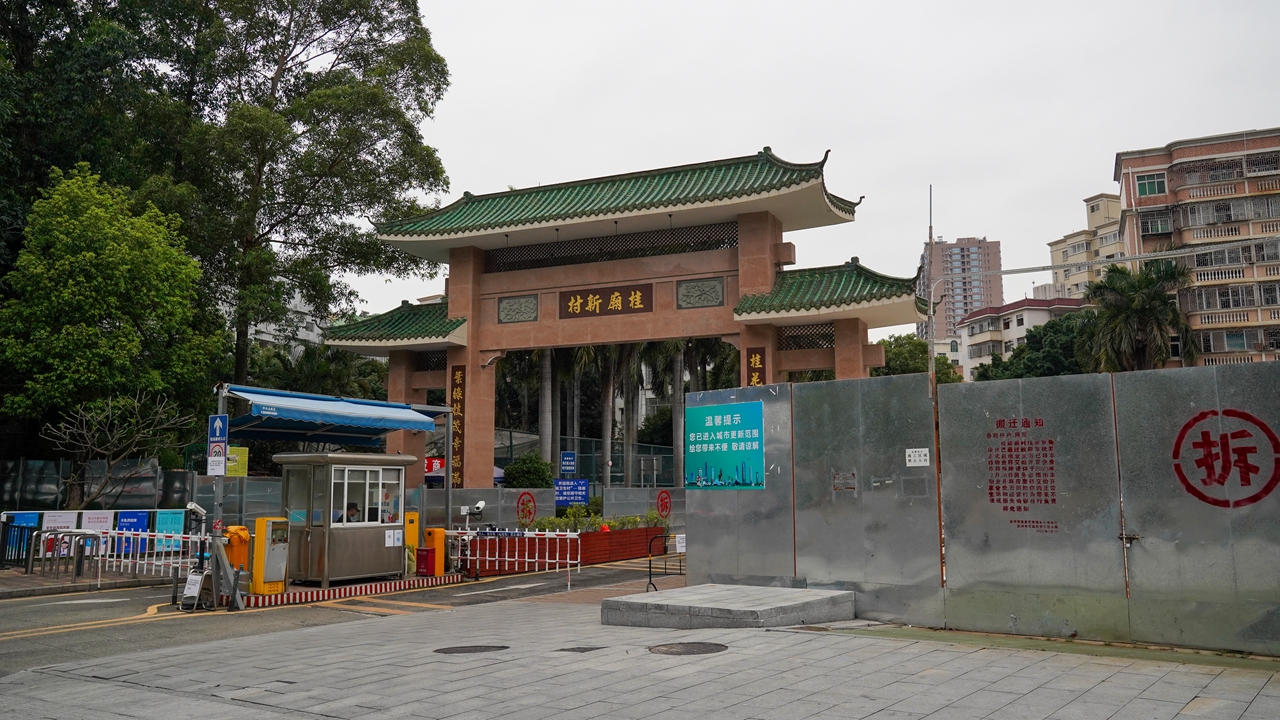
Guimiao New Village in Yuehai Subdistrict is barricaded for renovation in this photo taken April 2. Wang Haolan
It is one of the oldest urban villages in Shenzhen, the backyard of SZU and a 70,000-square-meter laidback area amidst Nanshan’s Yuehai Subdistrict’s high-tech enterprise jungle. Time seemed to stand still here until it was officially included in an urban renovation project announced by the Nanshan District Government in March 2021.
Today, with renovation in full swing, all of Guimiao’s buildings have been cleared and the entire area has been barricaded. The urban village, once filled with chatter, shouts and calls of students, residents and shopkeepers, is now reduced to the roar of machinery and the chirping of barn swallows.
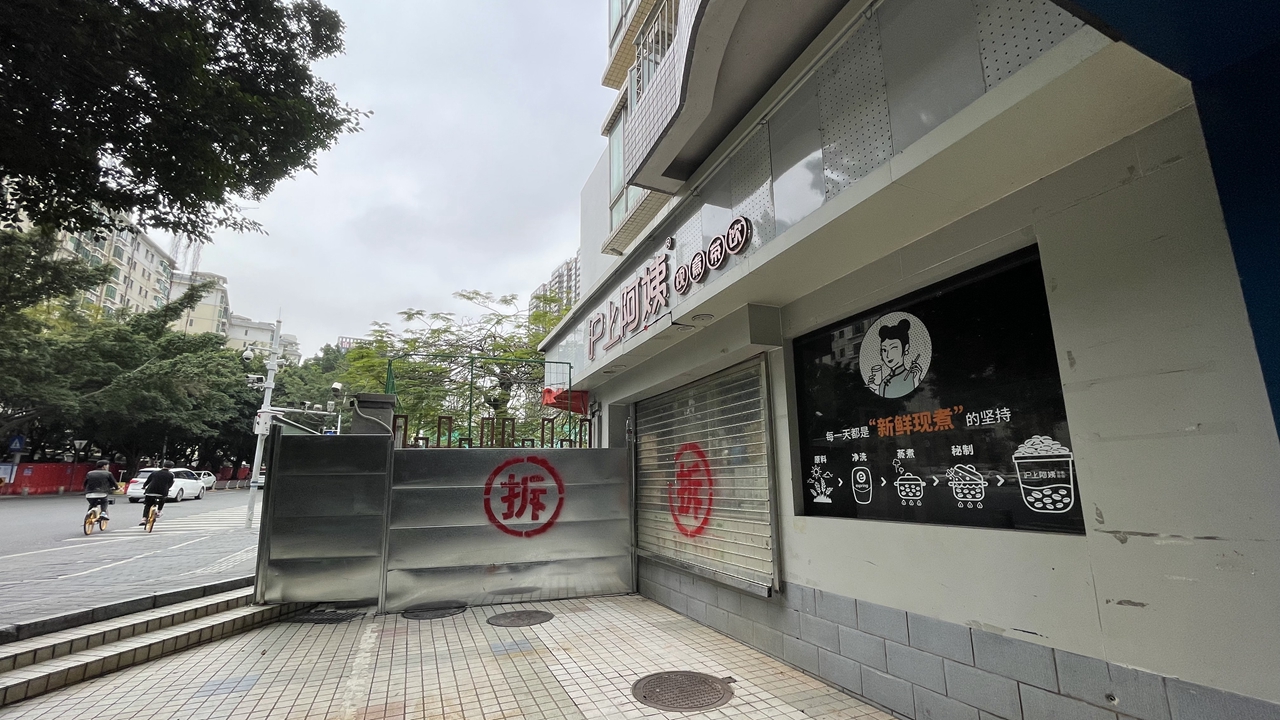
A beverage shop on Xuefu Road on the south side of Guimiao New Village is closed for the renovation.
On the facade of an empty building in Guimiao, there is a huge red poster with slogans that read: “Urban renovation, a cause for better life and better future.”
Renovation in place, memories intact
In Guimiao, each corner has its own story. In 2008, Ye Jun, a native from East China’s Jiangsu Province, opened an eatery named “That Little Restaurant.” Over the past 15 years, the restaurant, tucked away in an obscure corner of the village, has been one of the go-to places for SZU students, neighbors or anyone who visited Guimiao to try some specialties.
Li Ke, a SZU student and member of the school volleyball team, had been a frequent visitor of the restaurant.
“This is the place where we hold some team building events. We usually dropped in for some hot soup after a long training session,” Li said.
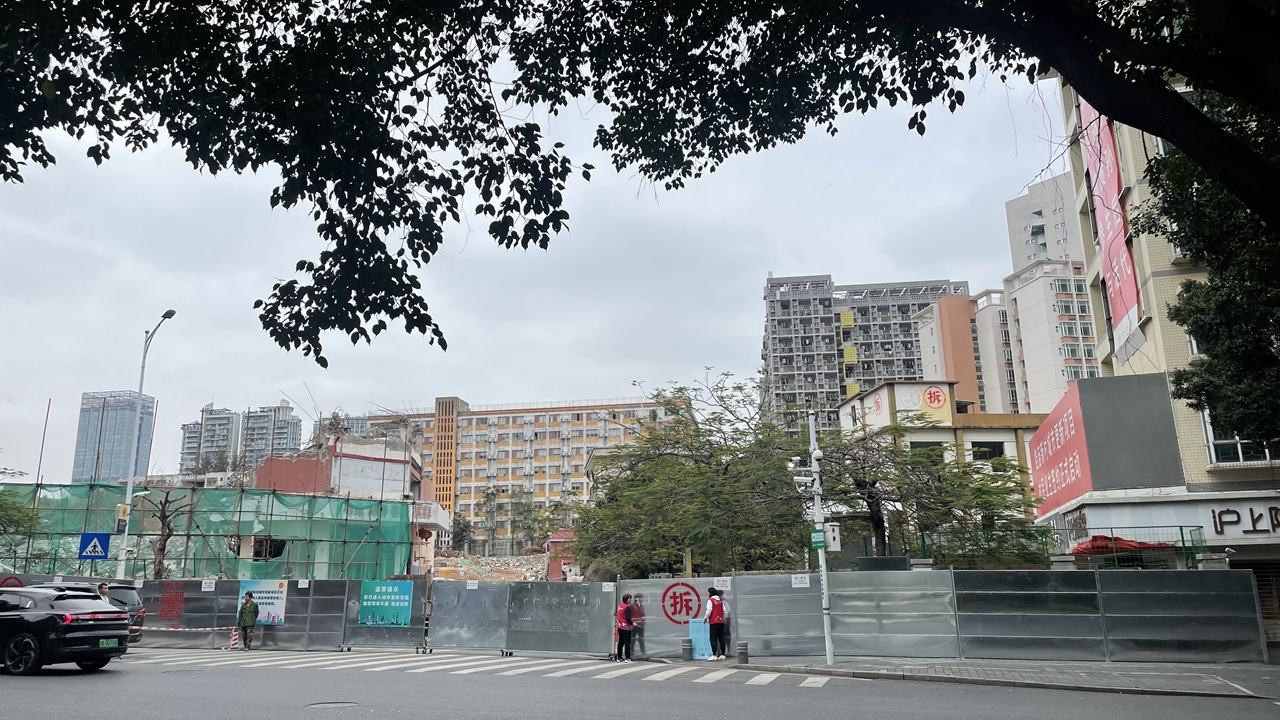
The south side of Guimiao New Village along Xuefu Road is barricaded for demolition of the buildings in the village.
Another popular shop among students in Guimiao is the Sisters’ Tofu Pudding sweet shop run by a woman surnamed Xu, who often goes by her nickname “Sister Na.”
Xu was deeply impressed by the inclusive atmosphere of SZU when she came to Shenzhen 10 years ago and she didn’t hesitate too much on opening the pudding shop in the nearby Guimiao.
Due to the need for urban renovation, Ye and Xu had to close their shops and look for new business locations outside the urban village.
“It is the shop that gives me the courage to live in this fast-paced city. Thank you and goodbye, Guimiao Sisters’ Tofu Pudding,” Xu said in her WeChat Moments on the day she reluctantly closed her pudding shop.
Reminiscing the good old days
In 2004, SZU’s new dormitory in Guimiao New Village welcomed its first batch of boarding students. Zhang Changwei, who was then a freshman, happily moved into the newly renovated and furnished dormitory.
“The living conditions in the Guimiao dormitory were much better than the other dormitories on campus at that time,” Zhang said. “As more and more students moved in, restaurants, supermarkets and food stalls started to sprout like mushrooms in Guimiao.”
Zhang graduated in 2009 and now works for Shenzhen Cereals Group. He said he continued to visit Guimiao from time to time. “Every time I revisited Guimiao, I tried to find out the exact building, floor and room I lived in, and started thinking about what kind of stories might be going on there.”
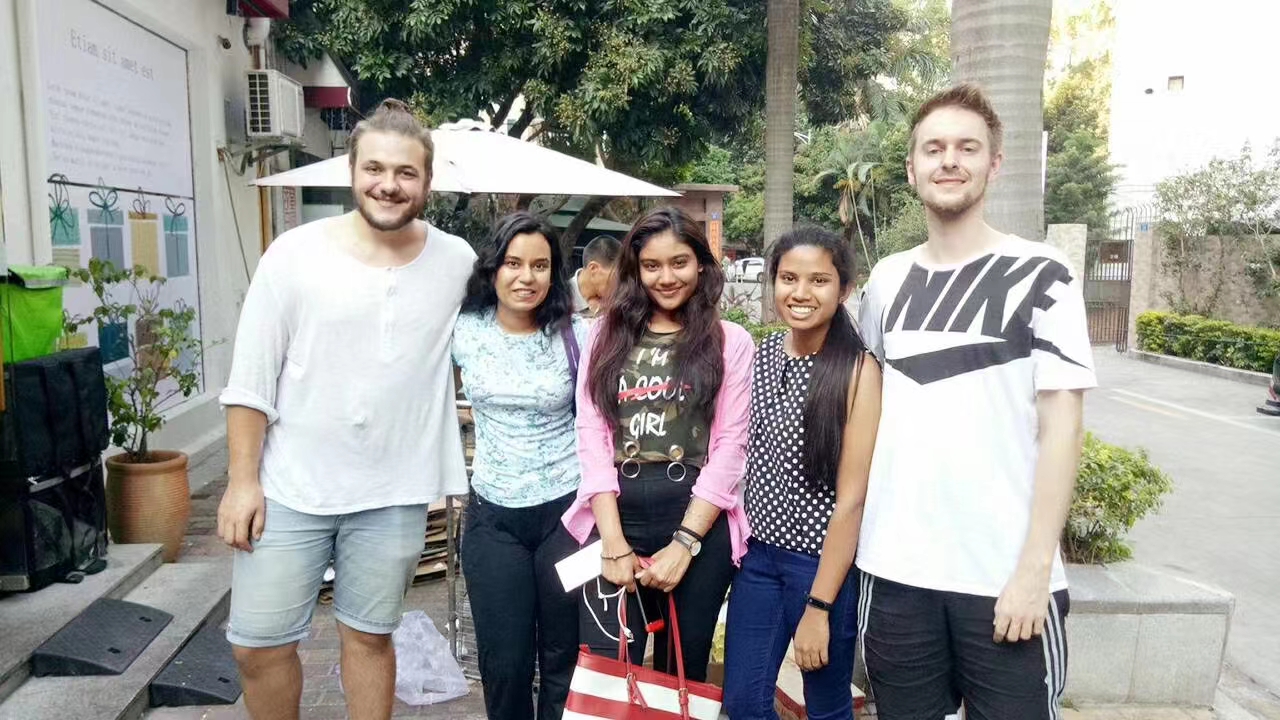
Sharma (2nd L) poses for a photo with other international students from Shenzhen University in Guimiao.
For international students like Priyasha Sharma from India, Guimiao was their first home away from home in Shenzhen, welcoming them with inclusiveness, diversity and hospitality. Sharma majored in international trade at SZU from 2015 to 2019 and is now pursuing her master’s degree in international management.
“I really miss the time when I was pursuing my bachelor’s degree at SZU,” Sharma recalled. “I am vegetarian and sometimes it was hard for me to find vegetarian food in the university canteen, so Guimiao, with plenty of affordable dining options, was a life saver for me.”
In addition to vegan food, Guimiao also had many international restaurants that catered to newly arrived foreign students. It was also the place where many students got their first taste of Chinese cuisine.
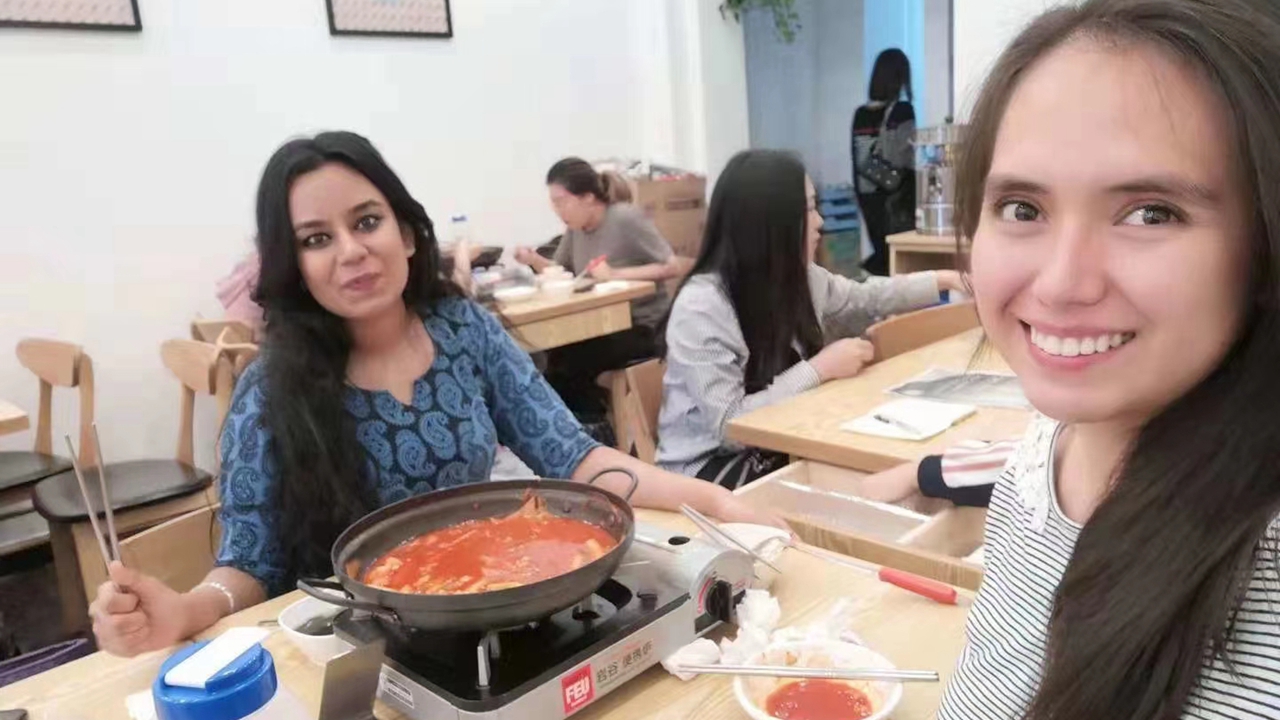
Sharma (in blue) has South Korean with her friends in Guimiao.
“I revisited Guimiao in 2020 and ended up finding that many shops were shut down due to the pandemic,” Sharma said. “Also, I felt like the renovation is taking away my memories and Guimiao will never be same anymore for me and my classmates, but I will still try my best to cherish all the beautiful memories I had there forever in my heart.”
Starting anew
Like many other urban villages in Shenzhen, Guimiao was home to migrant workers. The SZU volunteers group had started a program to care for the elderly in the village, and through their participation, Li Zhuoyuan and Xiao Yao met Auntie Mai, an elderly resident who had lived in Guimiao for decades.
For Xiao, Auntie Mai is an amiable Cantonese elderly woman who likes to sing along with her little red radio. “There are still many elders like Auntie Mai in Shenzhen. I hope more volunteers will bring them warmth and companionship,” she said.
“Urban renovation is necessary for a city’s development, especially in a metropolis like Shenzhen,” Zhang Changwei said. “I feel that the renovation will not erase Guimiao from our memories. The urban village’s history, culture and many other stories will remain intact. For Guimiao, it is the best time to start anew.”
(SZU interns Chen Keqi, Lin Yu’nan, Xia Zhuolin and Liang Qingmin also contributed to the story.)